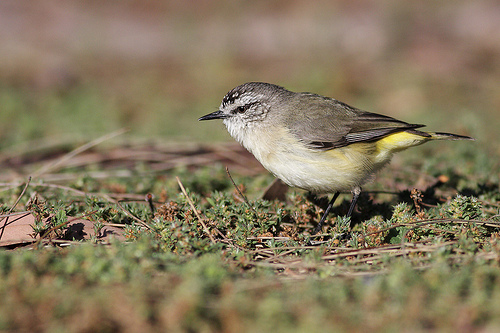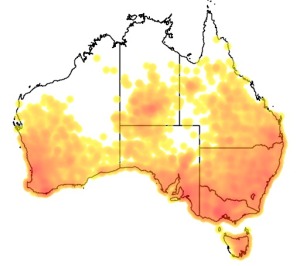Colours
Distinguishing features
It has a short tail and a long slender bill. The species has a distinctive yellow rump, a black forehead with white spots, grey head and neck, a white line above the eye and white throat. The belly is white with light buff below the wings. The wings are grey and the tail is black. The plumage varies somewhat dependent of subspecies. (Wikipedia)
Size
- From 9.5 cm to 12 cm (Length of specimen)
Wingspan
- Wingspan data is not yet available.
Synonyms
Distribution
Distribution and habitat preferences
The species has a wide distribution across western, southern and eastern Australia as well as Tasmania; it is absent from the north coast of Western Australia, parts of central Australia, northern Queensland and central and northern Northern Territory. The species inhabits a wide range of habitats, including open forest and woodland, grasslands, savannah as scrubland. (Wikipedia)
Audio recordings
Behaviour
They are typically found in small flocks, foraging on or near the ground.
Diet
The Yellow-rumped Thornbill is insectivorous; major prey items include ants, beetles, bugs and lerps. Other items eaten include spiders, flies and seeds. (Wikipedia)



